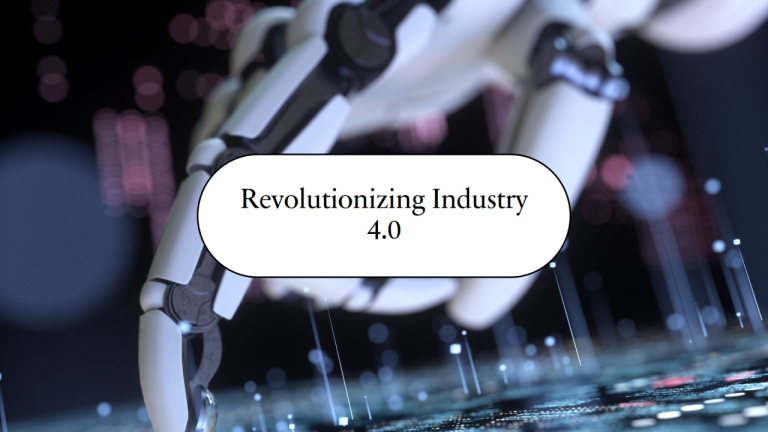The mining industry, known for its demanding and hazardous work environments, is undergoing a significant transformation thanks to the rapid advancements in automation and robotics. As the demand for minerals continues to rise, the need for more efficient, safer, and sustainable mining practices becomes even more critical. Automation and robotics are now at the forefront of this transformation, revolutionizing everything from exploration and extraction to transportation and processing. These technologies are reshaping the future of mining by enhancing productivity, reducing costs, improving safety, and minimizing environmental impact.
The Rise of Automation in Mining
Automation refers to the use of control systems such as computers or robots to handle processes that were traditionally carried out by humans. In the mining industry, automation encompasses a wide range of technologies, including autonomous vehicles, remote-controlled machinery, and advanced data analytics. The integration of automation has been particularly prevalent in tasks such as drilling, blasting, hauling, and sorting, where precision and efficiency are key.
Mining companies are increasingly adopting automated systems to replace manual operations, especially in remote or dangerous environments. Autonomous vehicles, drilling rigs, and loaders, for example, can operate 24/7 without human intervention, improving overall operational efficiency and minimizing downtime.
Robotics in Mining
Robotics, a branch of automation, involves the use of programmable machines capable of performing tasks typically done by humans. In mining, robots are used to perform complex, repetitive, or dangerous tasks with a high degree of precision. These robots can range from automated drill rigs to robotic drones that inspect mines from above.
Robotics in mining has proven especially valuable in hazardous environments, such as deep underground mines, where human safety is a top priority. Robotic systems can conduct inspections, take samples, and perform repairs, reducing the risks associated with human workers in such dangerous environments.
Key Applications of Automation and Robotics in Mining
1. Autonomous Hauling and Transportation
One of the most significant advancements in mining automation is the development of autonomous haul trucks. These self-driving trucks can transport materials around a mine site without a human driver. Major mining companies like Rio Tinto, BHP, and Caterpillar have already implemented autonomous haul trucks, which are able to operate around the clock with minimal human intervention.
These autonomous trucks are equipped with sensors, GPS, and artificial intelligence (AI) systems, allowing them to navigate rough terrain, avoid obstacles, and follow pre-determined routes. This not only improves productivity but also enhances safety by reducing human error and fatigue-related accidents.
2. Automated Drilling and Blasting
Automation in drilling and blasting processes is another game-changer for the mining industry. Autonomous drill rigs can perform tasks such as drilling holes for explosives or blasting without requiring direct human control. These rigs can be programmed to drill with high precision, optimizing hole placement and depth, which leads to more efficient blasting and better fragmentation of the ore.
The use of autonomous drilling also reduces the need for workers to be in close proximity to explosive materials, significantly enhancing worker safety.
3. Robotic Exploration and Inspection
Mining exploration often involves searching in remote and hard-to-reach areas, such as deep underground or in hazardous environments. Robotics and drones have proven invaluable for this purpose. Unmanned aerial vehicles (UAVs) and robotic systems equipped with cameras, sensors, and ground-penetrating radar are increasingly used to explore and monitor mine sites.
These robots can gather valuable data, assess mineral deposits, and conduct inspections without putting human workers in danger. For instance, drones can be deployed to inspect mining equipment or assess environmental conditions, providing real-time data and visual feedback to operators.
4. Remote-Controlled Equipment
Remote-controlled mining equipment, such as excavators, loaders, and drilling machines, allows operators to control machines from a safe distance, often from a central control room. This technology is particularly useful in hazardous environments such as deep mines or sites with extreme temperatures or toxic gases.
By enabling remote operation, mining companies can reduce risks to workers and improve operational efficiency. Workers are no longer required to be physically present on the ground, which mitigates exposure to health hazards and accidents.
5. Data Analytics and Predictive Maintenance
Data analytics and machine learning are crucial components of mining automation. Advanced sensors and monitoring systems gather real-time data from mining equipment, which is then analyzed using AI and predictive algorithms. These technologies can predict when a machine is likely to fail or require maintenance, allowing operators to perform maintenance before breakdowns occur, reducing downtime and costly repairs.
Predictive maintenance also enhances safety by preventing equipment failures that could lead to dangerous accidents.
Benefits of Automation and Robotics in Mining
1. Increased Efficiency and Productivity
Automation and robotics are revolutionizing mining by enhancing operational efficiency. With machines capable of working continuously without fatigue, mining operations can achieve higher throughput, shorter cycle times, and reduced downtime. Autonomous trucks, for example, can operate 24/7, hauling material around the clock without breaks, leading to a significant boost in productivity.
2. Enhanced Safety
Mining is a hazardous industry, with workers regularly exposed to risks such as cave-ins, equipment malfunctions, and exposure to toxic gases. Automation and robotics can significantly reduce the number of workers in dangerous situations by taking over tasks that would otherwise put human lives at risk. Autonomous vehicles, robotic inspection systems, and remote-controlled machines all contribute to safer mining environments by minimizing the need for humans to be physically present in high-risk areas.
3. Cost Savings
While the initial investment in automation and robotics can be high, the long-term cost savings are substantial. Automation reduces the need for manual labor, which lowers operating costs. Additionally, the increased efficiency and predictive maintenance capabilities reduce the chances of costly equipment failures and delays. Over time, these technologies help companies achieve a better return on investment.
4. Environmental Impact
Automated systems are helping the mining industry become more sustainable by improving resource management and reducing waste. Automation allows for more precise extraction of minerals, leading to less environmental disruption. Furthermore, remote monitoring and data analytics help optimize the use of energy and water in mining processes, reducing the overall environmental footprint of mining operations.
The Future of Automation and Robotics in Mining
As technology continues to evolve, the future of mining automation and robotics holds even greater potential. The integration of artificial intelligence, machine learning, and 5G connectivity will further enhance the capabilities of autonomous systems. AI algorithms will become even more advanced in decision-making, enabling fully autonomous mining operations without human oversight.
Moreover, automation will likely expand beyond the mine itself to include the entire supply chain, from extraction to transportation to processing. This interconnected, smart mining ecosystem will improve efficiency and sustainability on a global scale.
Conclusion
Automation and robotics are driving profound changes in the mining industry, offering solutions that increase efficiency, improve safety, and reduce environmental impact. From autonomous haul trucks to robotic exploration and inspection, these technologies are helping the mining industry overcome some of its most persistent challenges. As these innovations continue to develop, we can expect the mining sector to become safer, more productive, and more sustainable, meeting the growing global demand for minerals while protecting both workers and the environment.


